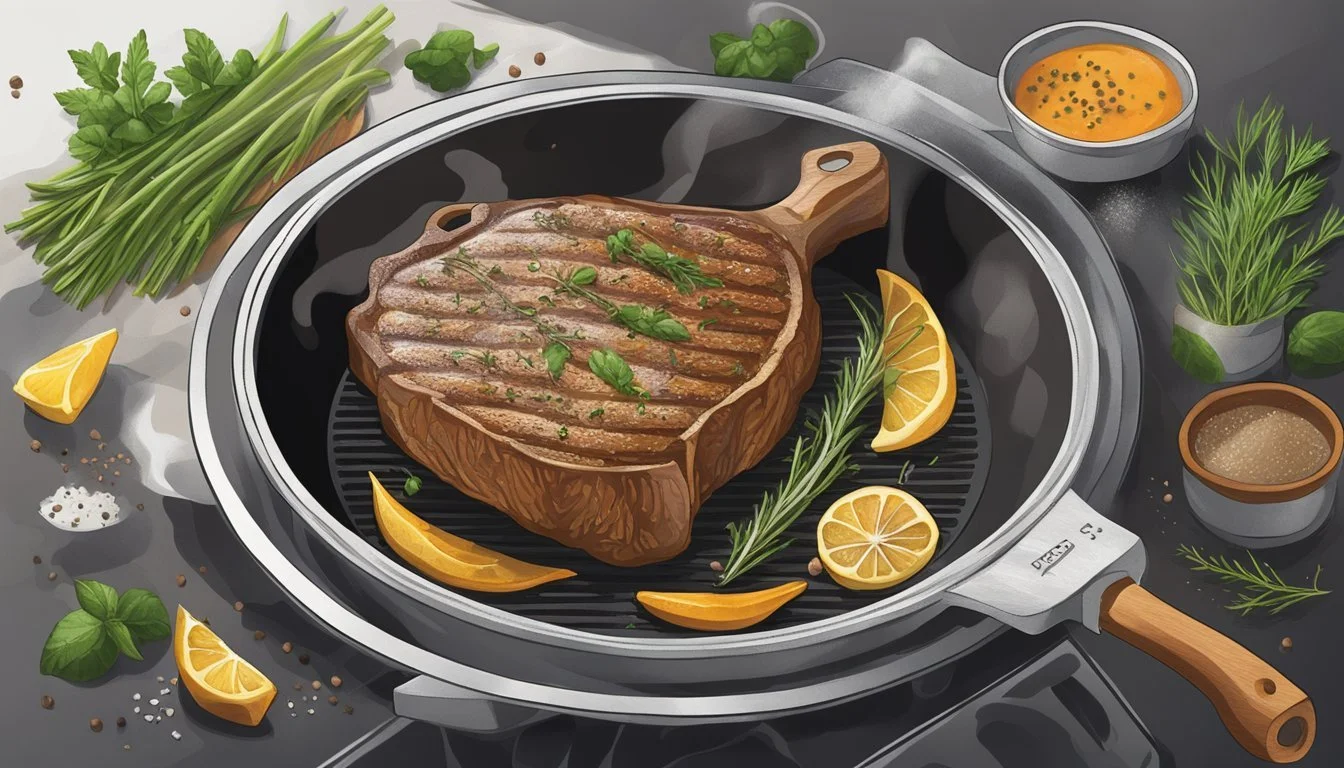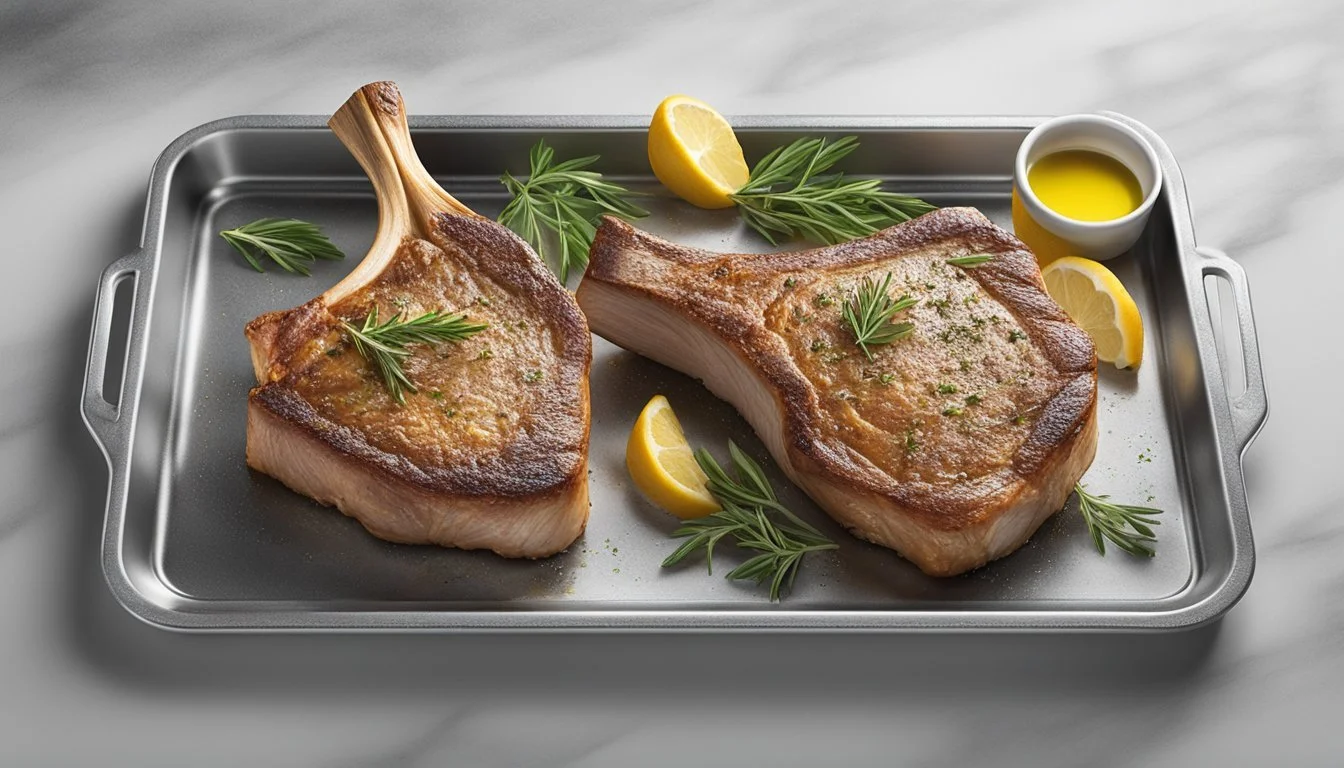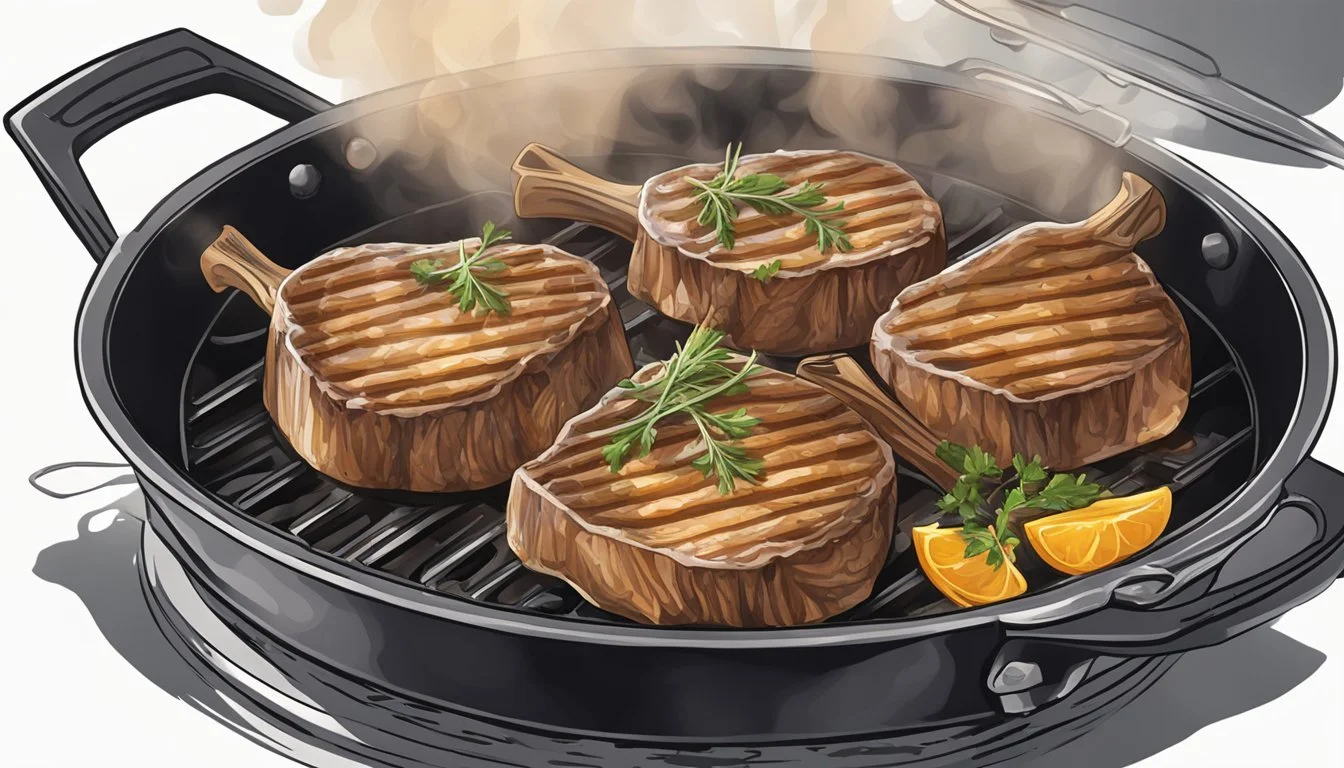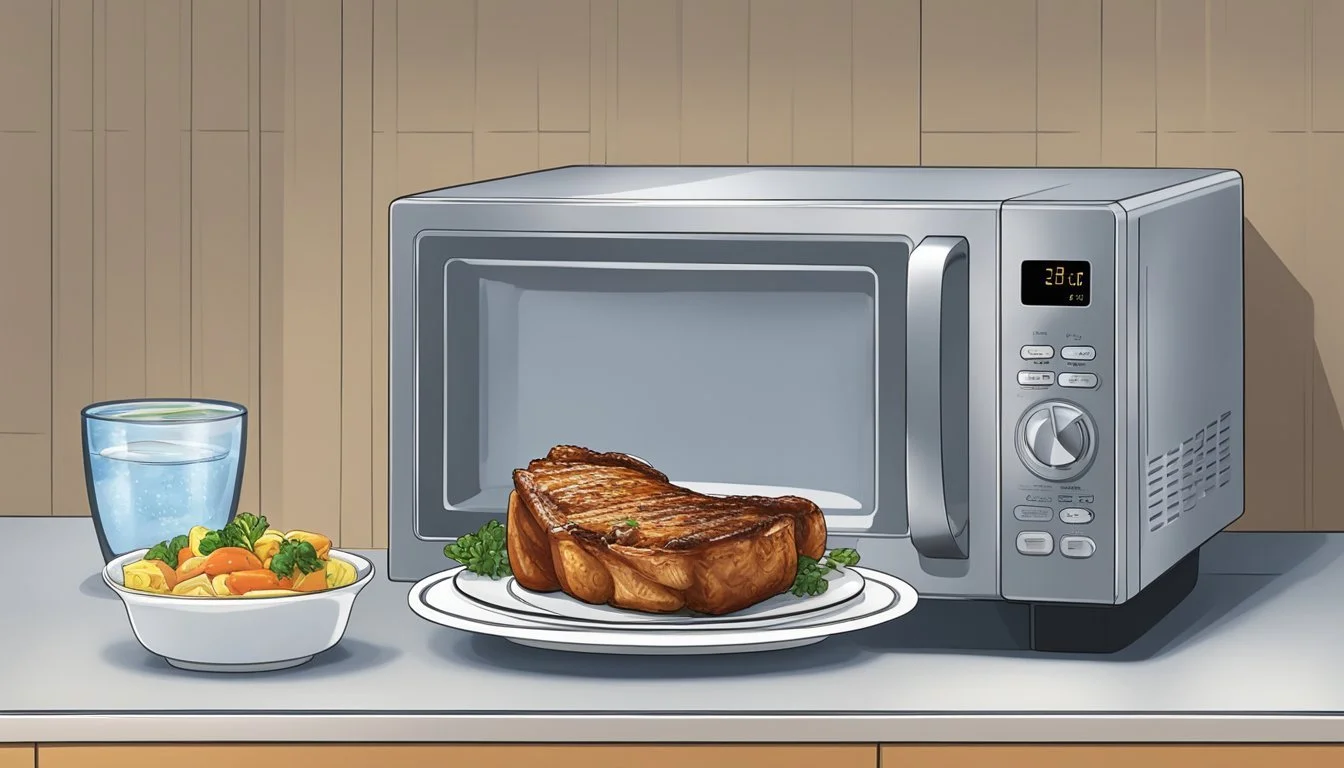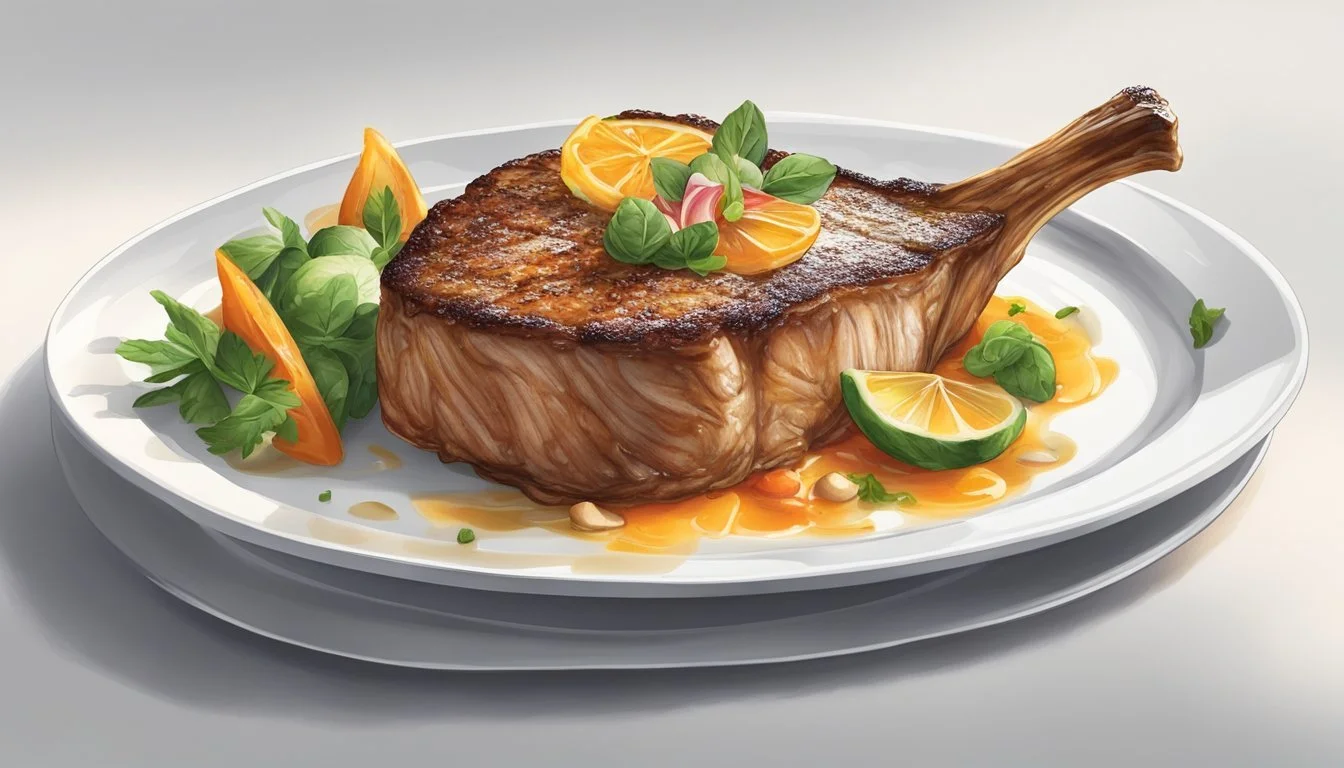Best Way to Reheat Veal Chops
Ensuring Flavorful and Tender Results
Reheating veal chops can be a delicate task, as preserving their succulent flavor and tender texture is paramount. Veal, known for its fine and mild taste, requires careful attention when being warmed up to ensure that the quality of the meat isn't compromised. This involves using the right methods and techniques to retain moisture and to bring the meat to the appropriate temperature without overcooking it.
To maintain the delicate flavor and prevent the veal chops from drying out, it is essential to control the heat source and the cooking environment. Whether using an oven, stove, or microwave, the reheating process should gently warm the veal chops rather than subject them to high heat which can lead to tough and less enjoyable meat.
Achieving perfectly reheated veal chops also means considering factors such as the chop's thickness and initial cooking state. The goal is to heat the meat through to the desired warmth while keeping its texture as close to its original state as possible. Specific techniques, such as adding a bit of moisture or covering the chops during reheating, can contribute to a result that is both flavorful and satisfying.
Understanding Veal Chops
When discussing veal chops, it is crucial to understand their distinct characteristics and how they differ from beef to truly appreciate and properly reheat this delicate meat.
Characteristics of Veal Meat
Veal refers to the meat from young cattle, typically calves that are up to 25 weeks old. The age at which the calves are harvested directly affects the tenderness and subtle flavor profile of the meat. Veal is known for its:
Delicate Flavor: Veal has a more subtle and mild taste compared to older beef.
Tenderness: Due to the young age of the calves, their muscles have not fully developed, making the meat exceptionally tender.
Color: Veal is usually lighter in color, ranging from a pale pink to a creamy white.
Protein Content: Like beef, veal is a good source of high-quality protein.
The unique characteristics of veal demand careful cooking and reheating methods to maintain its tender, juicy, and moist consistency while preserving its flavors.
Difference Between Veal and Beef
While both veal and beef come from cattle, there are significant differences between the two:
Aspect Veal Beef Age of Cattle Up to 25 weeks old Typically over 1 year old Texture More tender Less tender Flavor Milder and more delicate More robust Color Pale pink to creamy white Deep red
The main distinction lies in the age, resulting in veal's tender texture and delicate flavor, which contrasts with the stronger flavor and firmer texture found in beef. These differences play a pivotal role in choosing appropriate cooking and reheating techniques to enhance the best qualities of veal without compromising its moisture and flavors.
Preliminary Steps Before Reheating
When reheating veal chops, proper preparation is crucial to maintain their flavor and texture. Before applying any heat, certain preliminary steps ensure the meat is ready to be brought back to its optimal state.
Storage Best Practices
The longevity and safety of leftover veal chops greatly depend on how they are stored. One should immediately refrigerate leftovers within two hours of cooking to prevent bacterial growth. Veal chops should be kept in the refrigerator at a temperature below 40°F (4°C) and preferably stored in a shallow airtight container or wrapped tightly in aluminum foil or plastic wrap to maintain quality.
Refrigerate promptly: Store within 2 hours of cooking.
Temperature: Keep below 40°F (4°C).
Airtight container: Use to prevent odor absorption and drying out.
Bringing Veal Chops to Room Temperature
Before reheating, veal chops should be brought to room temperature to ensure even heating and to preserve their delicate flavor. This typically takes about 15-30 minutes, depending on the thickness of the chops. One should remove the chops from the refrigerator and let them sit, covered, on the counter. To measure readiness, the internal temperature should be close to the ambient room temperature. Avoid leaving the veal out for longer than necessary to minimize the risk of bacterial contamination.
Resting Time: 15-30 minutes until near room temperature.
Cover: Ensure chops are covered while resting.
Internal Temperature Check: Use a food thermometer if necessary.
Reheating Methods
Choosing the right reheating method for veal chops can help retain their moisture and flavor while ensuring a safe eating temperature. Here are detailed instructions for different techniques depending on the tools available and the desired outcome.
Oven Reheating for Optimal Moisture
Oven reheating is an effective way to warm veal chops evenly without drying them out. To reheat:
Preheat the oven to 350°F (175°C).
Wrap the veal chops in foil to preserve moisture.
Heat for about 10 minutes or until the internal temperature reaches 165°F (74°C).
Skillet Techniques for Crispy Exterior
Using a skillet can provide a crispier exterior to the veal chops. The procedure includes:
Heat a non-stick skillet with a bit of oil on medium heat.
Place the chops in the skillet, cooking each side for 2-3 minutes until a nice crust forms.
Alternative Methods: Microwave and Stovetop
For a quick reheating option:
Microwave: Put the chops on a microwave-safe dish, add a few tablespoons of water, cover, and microwave on high for 2-4 minutes.
Stovetop: Heat them in a covered skillet with a bit of broth or water on medium heat for a few minutes on each side.
Using the Grill to Reheat Veal
Grilling can also be used to reheat veal chops while adding a barbeque flavor. Use moderate heat and keep the chops on for a few minutes on each side, watching closely to prevent overcooking.
Preventing Common Reheating Mistakes
When reheating veal chops, it's pivotal to maintain their delicate texture and juiciness. Careful monitoring of temperature and time, along with proper wrapping, can prevent the common pitfalls of overcooking and drying out, ensuring a moist and flavorful result.
Monitoring Temperature and Time
One must never underestimate the importance of temperature control when reheating veal chops. Overcooking is a misstep that can transform succulent meat into a tough and unappetizing dish. It is, therefore, crucial to use a meat thermometer to check for doneness and ensure the internal temperature reaches a safe yet tender 165°F (74°C). The table below outlines optimal reheating times:
Veal Chop Thickness Reheating Time (Oven at 350°F/175°C) 1/2 inch 10-12 minutes 1 inch 15-18 minutes 1 1/2 inches 20-25 minutes
These times are approximate; one should always monitor closely, adjusting as necessary. The veal is done perfectly when it is heated through but still retains a juicy interior.
Wrapping Veal Chops Properly
Properly wrapping veal chops is essential to retain moisture during the reheating process. Wrapping the veal in foil is a reliable method to achieve an evenly warmed, moist, and tender chop. When wrapping, ensure that the foil is not too tight — it should create an encapsulating tent that allows for heat circulation while trapping steam. This aids in preventing moisture loss and keeps the veal chops juicy.
Remember, the foil should be removed towards the end of reheating to allow the outside of the veal chops to regain a bit of their original texture. If one skips this step, they might prevent the chop from achieving that slight crispness on the exterior which is characteristic of perfectly reheated veal.
Enhancing Reheated Veal Chops
Proper seasoning and sauce selection, along with layering flavors, are essential for bringing reheated veal chops back to life. These enhancements ensure that moisture and flavor are preserved and that the veal’s delicate taste is accentuated without being overshadowed.
Choosing the Right Seasonings and Sauces
The secret to maintaining the natural succulence of veal chops lies in the choice of herbs, sauces, and seasonings. A light touch is key:
Herbs: Fresh herbs such as rosemary, thyme, or sage can impart subtle flavors that complement veal’s natural taste.
Garlic: Minced garlic can be used judiciously to add depth without dominating.
Butter and Olive Oil: A combination of butter and olive oil not just enhances flavor, but also helps to keep the chops moist during the reheating process.
One can consider the following sauce options for their rich yet balanced characteristics:
Sauce Type Ingredients Flavor Profile Wine Reduction Red wine, stock, butter, herbs Rich and complex, with a slight acidity. Mushroom Sauce Mushrooms, cream, stock Creamy with an earthy undertone. Classic Gravy Meat drippings, flour, stock Rich and savory, enhancing the veal without masking it.
Creating Additional Flavor Layers
Layering flavors while reheating can transform a simple dish into something extraordinary. This can be achieved by:
Marination: Briefly marinating the veal chops in olive oil and herbs before reheating can infuse them with additional flavor.
Basting: Spooning a sauce or a moisture-rich compound like herbed butter over the chops as they reheat will not only add a new dimension of taste but also keep the meat tender.
Layering flavors should be subtle and should respect the original character of the veal, ensuring that each bite is rich in moisture and infused with harmonious flavors.
Serving Suggestions and Pairings
When re-heating veal chops, choosing the right sides and pairing wines can greatly enhance the dining experience. The selected accompaniments should complement the delicate flavors of the veal without overshadowing them.
Complementing with Sides
Mashed Potatoes: Smooth and buttery, mashed potatoes are a classic choice, providing a creamy texture that pairs well with the tender veal.
Risotto Milanese: This rich, saffron-scented risotto offers a luxurious contrast to the veal chops.
Salads:
Arugula Salad: A simple salad with a peppery bite that refreshes the palate.
Corn Salad: Crisp and sweet, corn salad adds a light and refreshing element.
Vegetables:
Roasted Asparagus: It brings sweetness and a slight crunch that pairs nicely with the meat.
Creamed Spinach: Soft and rich, it's a hearty and flavorful side.
Grilled Eggplant: (What wine goes well with grilled eggplant?) It provides a smoky flavor that complements the natural taste of veal.
Recommended Wine Pairings
Chardonnay: A full-bodied white wine like Chardonnay can stand up to the richness of veal chops without overpowering the taste.
Pinot Noir: For those who prefer red, a light to medium-bodied Pinot Noir can offer fruit-forward notes that match well with the savory veal.
Cabernet Sauvignon: If the veal is prepared with a more robust seasoning, a glass of bold Cabernet Sauvignon can pair beautifully, bringing out the complexities in each.
Safety Precautions and Tips
When reheating veal chops, one should consider both food safety and the maintenance of the meat's quality. These guidelines ensure that the veal is not only safe to consume but also retains its delicate flavor and texture.
Food Safety Guidelines
Internal Temperature: To prevent foodborne illness, the USDA recommends that all types of leftovers, including veal chops, should be reheated to an internal temperature of 165°F. Use a food thermometer to accurately check the temperature.
Storage: Leftover veal chops should be stored in an airtight container to prevent contamination and drying out. They should be refrigerated promptly and consumed within three to four days to ensure safety.
Assuring Ideal Reheating Results
Moisture Retention: Adding a small amount of water or broth before covering the veal chops can help to maintain moisture during the reheating process.
Even Heat Distribution: To prevent uneven heating and overcooking, veal chops should be spaced out on a baking sheet and flipped halfway through reheating if using an oven. In a microwave, it is recommended to reheat in short intervals, stirring or rotating the meat if possible.
Additional Cooking Techniques
When reheating veal chops, alternative cooking methods can enhance their flavor and texture. Exploring techniques such as searing, breading with grilling, and incorporating them into recipes ensures that the veal retains its tenderness and taste.
Searing Veal Chops
To sear veal chops, one should heat a cast iron skillet over high heat. Before placing the chops in the pan, they can pat the meat dry to ensure a proper sear. They should then sear each side for 1-2 minutes until a golden-brown crust forms. This technique locks in juices, resulting in a flavorful exterior while reheating the chop through.
Breading and Grilling Options
Breading veal chops adds texture and helps to lock in moisture during the reheating process. The individual may dip the chops in beaten egg, then coat them in breadcrumbs seasoned with herbs and Parmesan for a veal Parmesan (What wine goes well with veal parmesan?) twist. They can then grill the breaded chops over medium heat until the breading is crisp and golden. Using a marinade before breading can impart additional flavors to the veal.
Incorporating Veal into Recipes
Incorporating veal chops into recipes can rejuvenate them with flavor and moisture. One might chop the veal into pieces and add it to sauces, stews, or as a protein in a hearty salad. This technique allows the veal to absorb surrounding flavors and become more tender, as in a recipe for veal chop stew or sliced to top a fresh arugula salad.
Food Presentation and Aesthetics
When reheating veal chops, the end presentation can impact the dining experience significantly. The right techniques and garnishes not only enhance flavor, but also add visual appeal that complements the delicate taste and texture of the veal.
Plating Techniques
Before placing veal chops on the serving dish, it is crucial to warm the plates to ensure that the meat maintains its temperature. Veal should be placed at the center of the plate, showcasing its seared crust and juicy interior. For visual balance, one can lean the chop against a side dish or arrange it beside a scoop of accompaniment.
Warm the plate before serving.
Center the veal chop on the plate.
Lean the chop against sides or arrange it beside accompaniments.
Selecting Garnishes for Appeal
Garnishes should be chosen to complement the flavor of the veal and enhance its visual appeal. A drizzle of olive oil can add a glossy sheen and a hint of richness, while a squeeze of lemon juice provides a burst of brightness to cut through the savory taste. A scattering of mixed greens, and a few cherry tomatoes add color and a fresh component to the dish.
Drizzle with olive oil for richness and sheen.
Add a squeeze of lemon juice for brightness.
Scatter mixed greens and cherry tomatoes for color and freshness.

